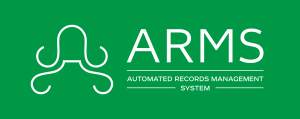A Mobile World, Requires Mobile Security
- Category - ARMS, Industry Business, Protection, Security
Protect the tablets you use for mobile CAD and RMS If your safety team is like most others, you will frequently use mobile devices like tablets and smartphones, so your team can access your software in the field. Assuming this applies to your group, then you must have systems in place to protect your devices, ensuring their continuing functionality. Between protection from hardware and software hazards, there are multiple strategies that you should keep in mind.
Physical Protection
Start by protecting your devices from physical damage due to things such as falls or coming into contact with sharp or heavy objects. The simplest way to achieve this goal is by investing in tablet sleeves or cases of some sort. There is a range of cases available for all tablets, but you will likely want to opt for something durable since the devices will always be on the go and are so crucial to your work. When looking for safety cases, consider one that has an element of fall protection in it. Supplement it with a solid screen protector made of sturdy tempered glass or another strong material. As you choose which ones to buy, you may want to select one that is comfortable to hold. You may also consider getting one that works well with vehicle mounts, so your team can view the tablet in their cars while patrolling.
Cybersecurity Protection
Next, take a look at the ways to protect tablets from cybersecurity threats. The simplest thing is to do is ensure a strong PIN code in accessing the device or some sort of biometric system. This will help deter cyberattackers from gaining access to sensitive information you store there. Make sure that your devices all have antivirus software installed on them as well. While most people think of antivirus protection as something you just need for computers, it is also crucial for mobile devices, particularly those that handle sensitive tasks like those related to security. The right antivirus software will reduce the risk of malware or tracking software accidentally making its way into your devices. One of the many ways that malware can get on a device is via software downloads and installations. To reduce this risk, set up the devices so that only administrators are able to install new applications. At the very least, require a code or system for administrator approval for these installations to ensure that only trusted software ends up on your tablets. When downloading new files or applications, ensure this is only done on reputable websites that you can trust. On a similar note, train your team to only click on links or attachments that they can trust. Before clicking, encourage your team always to confirm that the source is reputable, and everything is as it appears, without email spoofing or a similar issue at play. Public Wi-Fi networks are highly convenient but pose a security risk. Avoid this by setting up policies to avoid public wireless networks when using your tablets or smartphones. If your teams must use these networks, then require your team to use a VPN or other encryption service. To avoid the use of public Wi-Fi, either give your team devices with hotspot capabilities or set up data on your devices. Take care of regular backups as well so that if something does happen to the device, you will not lose any information. Alternatively, you can store data in the cloud. Finally, make sure not to store passwords or other login credentials on your devices. This will make it much easier for hackers or thieves to gain access, and the added security is worth the extra few seconds for your team to log in again.
Theft Protection
Now, look at the ways that you can protect the devices from thieves. This starts with the use of biometrics or PINs to access the device. This way, even if a thief steals the device, they cannot use it or obtain sensitive information. You should also take the time to enable remote location as well as remote wiping on your devices. This lets you track where a thief takes the device after stealing it, while the latter can even let you remotely wipe data if you know the tablet is stolen. That is the ultimate method of preventing stolen sensitive information. Of course, you should also protect your team’s tablets from theft by storing them in a secure location. In the office, they should be somewhere that only trusted people have access to. Teach your team not to leave the devices unattended while out in the field.


